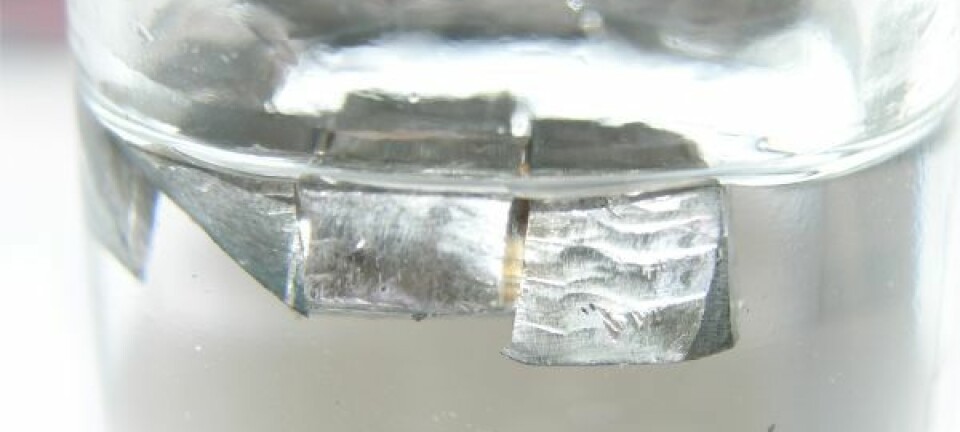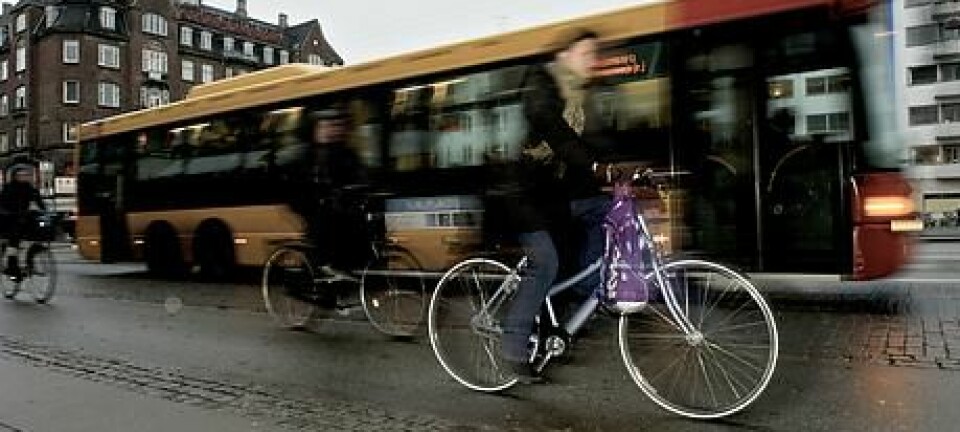
Fuel cells speed up cyclists
Tiny fuel cells will soon be supplying energy to the numerous electronic gadgets used by amateur and elite cyclists.
A serious cyclist needs an electronic gear shifter, GPS, a heart rate monitor, a wattmeter and wireless transfer equipment.
All these components need energy, and this energy usually comes from a battery. But supplying sufficient energy for all these functions can make the battery quite heavy – and that’s bad news for cyclists, who are notoriously weight-conscious people.
Hence the need for lighter solutions with higher energy capacity.
Methanol replaces lithium-ion
The Danish Technological Institute (DTI), a self-owned R&D institution, has teamed up with startup company TrolCell to find a solution to cyclists’ energy worries.
The energy density of methanol is much higher than in the solids in traditional batteries. As it looks now, we can make a system with ten times as much energy density as a regular battery.
The solution is a further development of a very small fuel cell, originally developed by DTI for use in hearing aids. Like traditional batteries, the fuel cell can deliver energy to electrical components, but the difference is that the fuel cells use methanol rather than lithium as the source of energy.
This results in more energy without increasing the weight.
“The batteries currently being used in electronic gear shifters can last around ten hours with average use,” says senior consultant Asger Laurberg Vig, who’s responsible for DTI’s section of the project.
“But if you add all the other power-intensive gadgets like wattmeter, heart rate monitor, wireless transfer equipment and so on, then the batteries, which weigh around 100 grams, will only last two hours.”
He adds that providing energy for all these functions over extended periods would require about half a kilo’s worth of batteries – which wouldn’t be very attractive for the cyclists.
Increased capacity in the same space
DTI has redesigned the fuel cell from its original use in hearing aids so that it can now be used on a bike and withstand vibrations and bad weather.
“Methanol fuel cells are currently being used in large systems which require energy measured in kilowatts, rather than watts or milliwatts,” he says.
“A mobile phone charger, for instance, uses only a few watts per charge. Our innovation is that we’ve adjusted the cells to operate in very small units. The first one was designed for a hearing aid company, which wanted more features but not larger batteries.”
And this is where the fuel cells deliver: they contain more than ten times more energy than a regular battery of the same size.
”The energy density of methanol is much higher than in the solids in traditional batteries. As it looks now, we can make a system with ten times as much energy density as a regular battery.”
No need for a power socket
Another advantage of using fuel cells is that they don’t require a power outlet for recharging. A recharge only requires an injection of the fluid that runs the fuel cells, which shouldn’t take more than 30 seconds.
However, the fuel cells also have their hiccups, not unlike those that regular batteries have had to deal with: each recharge weakens the cell’s capacity.
“If you place a rechargeable battery and a methanol fuel cell next to each other and let them run and recharge for a full year, the battery would be better at sustaining its capacity, says Vig.
“That’s a problem we’re trying to solve by designing the internal workings of the fuel cell down to the nano level. Fuel cells are at an earlier stage of development than batteries, but we’re seeing some very fast improvements in fuel cells’ service life and soon they’ll be on par with lithium-ion batteries.”
Wide variety of uses
The other entrepreneur in the development of the fuel cells is startup company TrollCell, which is run by Lars Knutsen, a PhD in Information Systems.
He came up with the idea. He turned to DTI as he felt there was a need for more energy-efficient solutions for electronic sports and outdoor products.
He says they have optimised and further developed the micro fuel cell technology and adapted it for use in outdoor products such as electronics for bikes, LED flashlights, chargers and in general any electrical gadget that’s not easily and quickly rechargeable.
“In principle, the technology can be developed and scaled so that it can also be used in most standard electronic applications available today. All the user needs to think about is the change from electrical charging to a liquid-based refill. The benefits are obvious: you don’t need to wait for your appliance to recharge.”
Prototype ready within a year
The entrepreneurs are not far from reaching their goal: "We expect to have demonstrators that can be tested on the road within a year," says Vig.
The further development is dependent on whether they can find a sponsor. If they do, the future looks bright:
“We’re looking for an investor and companies that want this technology to move on to the prototype stage,” he says. “The status of the technology right now is that we’ll have a demonstrator fitted on an outdoor bike this summer. Meanwhile, we’ll continue working on the patenting.”
------------------------------
Read this article in Danish at videnskab.dk
Translated by: Dann Vinther






